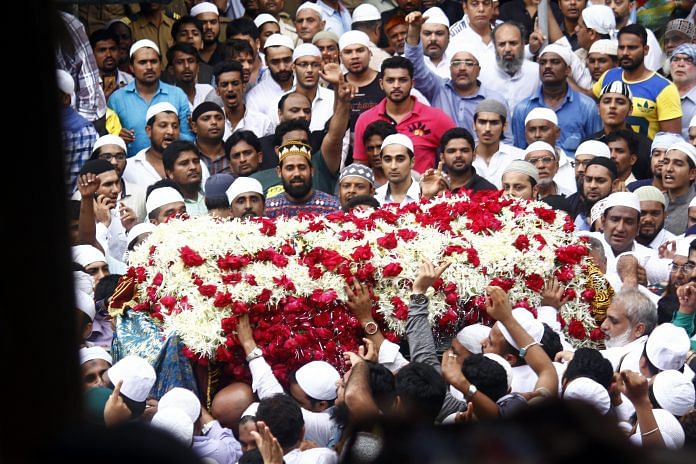Mainstream media gives it a miss; no memorial or prayer meeting organised for those killed in India’s first organised urban terror attack.
Mumbai: On 12 March 1993, 257 people died and 713 were injured in Mumbai, India’s biggest terrorist attack yet.
Since then, a lot has changed. Bombay has become ‘Mumbai.’ The city’s famous underworld is now largely down under. The iconic Hotel Sea Rock, once a Bollywood haunt and one of the blast sites, doesn’t tower over the Bandra skyline anymore. The Bombay Stock Exchange, where the first bomb went off, now looks like a secured fortress, while people near the Lucky petrol pump close to Sena Bhavan have gotten accustomed to blasts of a different kind to build an underground Metro corridor.
As the city changed, the memory of the attack, the first organised urban terror attack in the country, also seems to have ebbed from its consciousness.
On the 25th anniversary of the blasts, there was little mention of the incident in the mainstream media or even on social media; there were no publicised memorial events or prayer meetings, and no statements from prominent figures condemning terror or supporting victims. Even the ongoing budget session of the Maharashtra legislature had one point on Monday’s agenda — a condolence motion for Congress leader Patangrao Kadam’s recent death.
First case of urban terror in India
“The 1993 serial blasts was the first case of urban terrorism in India and to date, it remains the biggest in terms of the loss of lives and damage,” said M.N. Singh, former Mumbai Police commissioner.
“But, since then, Mumbai itself has seen about a dozen terror attacks and we have lost about a thousand people to such incidents in this city alone,” added Singh, who was the joint commissioner of police (crime) in 1993.
Singh said the blasts were significant in more ways than one. The Mumbai Police was then equipped to just be a civil police force and has taken many strides forward since then.
“That was the first time we saw AK-47s and hand grenades being used. The sea route was used to bring in weapons. We did not even know RDX back then,” Singh said.
“Jolted by the incident, we broke the back of the underworld. Awareness in the police force now is much better, but it is still a battle of wits,” he said.
Despite all these advancements, Mumbai still remains sensitive, the former top cop said.
Perpetrators are still at large
Singh said it’s unfortunate that the 25th anniversary of the event is not remembered as strongly, but added, “My only regret is that while we had a 10,000-page chargesheet ready at breakneck speed, the trial took 14 years and we have still not been able to bring back Dawood Ibrahim and Tiger Memon and put them on trial.”
Events related to the 1993 blasts have perhaps received more attention in comparison than the memory of the blasts itself in recent years. For instance, every detail of actor Sanjay Dutt’s trial, conviction, imprisonment, parole and release always took centre stage in TV discussions and news reports. The capital punishment and the funeral of Yakub Memon, the sole convict from the 1993 blasts to be hanged, was also widely discussed.
The city observes the anniversary of the 26/11 terror attacks that left 166 people, including many foreigners dead, with expressions of a strong sense of outrage, memorial services, commemoration of the bravery of those who shielded the city and even messages of communal harmony.
On the last anniversary, Maharashtra chief minister Devendra Fadnavis had attended a function at the Gateway of India in the honour of the 26/11 victims where his wife, Amruta Fadnavis, sang.
Are 1993 blasts fading from public memory?
Vijay Raghavan, professor at Centre for Criminology and Justice, Tata Institute of Social Sciences, said there are two reasons why these events evoke a stronger response than the 1993 blasts.
“One is the obvious, that public memory is short. Secondly, victims of the 1993 blasts were largely ordinary people,” he said.
“In comparison, high-profile people from the upper classes, frequenting hotels such as Taj and Trident were the victims of the 26/11 terror attacks. A number of foreigners were killed. That could be a reason,” Raghavan added.
Shiv Sena MP Gajanan Kirtikar said it is a human process to grieve and move on after a few years and no one is really to blame for the fading memory of the 1993 blasts. Kirtikar was accused by the Srikrishna Commission of inciting violence in the 1992-93 riots and was later acquitted by a special magistrate’s court.
He said one of the major reasons why the 1993 blasts don’t stir the same emotion as earlier is because the case has lost steam.
“What have we done to bring the absconding to book? People have given up hope that Dawood Ibrahim or Tiger Memon will ever be brought back,” he added.






